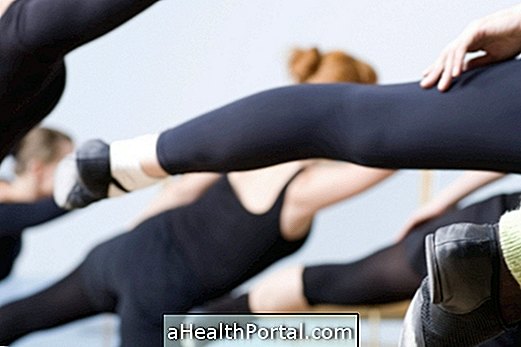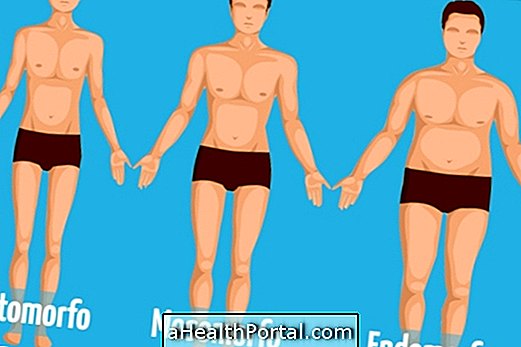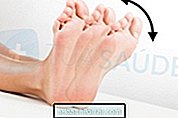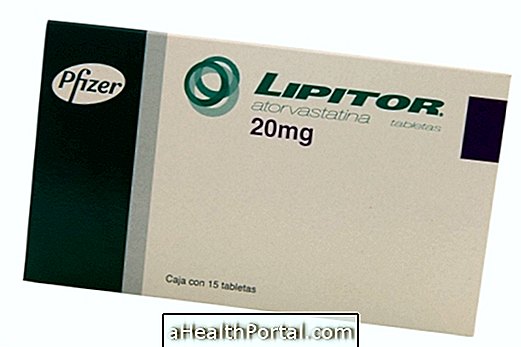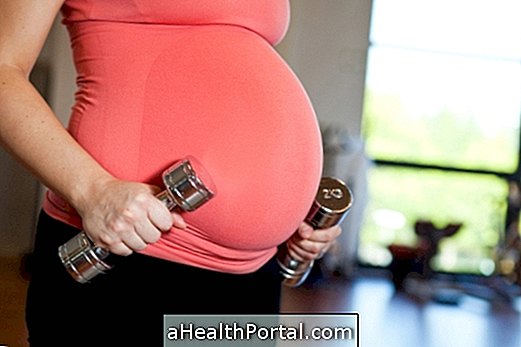Bioimpedance is an examination that looks at body composition, indicating the approximate amount of muscle, bone, and fat. This exam is widely used in gyms and complements in nutrition consultations to evaluate the results of the training plan or diet, for example, and can be performed every 3 or 6 months to compare results and verify some evolution of body composition.
This type of examination is done on special scales, such as Tanita or Omron, which have metal plates that lead to a weak type of electric current that runs through the body.
Therefore, in addition to the current weight, these scales also show the amount of muscle, fat, water and even the calories burned throughout the day, according to sex, age, height and intensity of physical activity. entered into the scale.
Understand how it works in our fun video:

How it works
Bio-impedance devices can measure the percentage of body fat, muscle, bone, and water because an electric current passes through the body through metal plates. This current travels easily through the water and therefore very hydrated tissues, such as muscles, allow the current to pass quickly. Fat and bones, on the other hand, have little water, so the current is more difficult to pass through.
And so the difference between the resistance of the fat, letting the current pass, and the speed with which it passes through tissues such as the muscles, for example, allows the device to calculate the amount that indicates the amount of lean mass, fat, and Water.
Thus, to know the composition of the body, it is enough to climb barefoot, without socks, in a Tanita, for example, or to hold, in the hands, the metal plates of another type of minor apparatus. The major difference between these two methods of bioimpedance is that, in the balance, the results are more accurate for the composition of the lower half of the body, whereas in the apparatus, which is held in the hands, the result refers to the composition of the trunk, arms and head. In this way, the most rigorous way of knowing body composition is to use a balance that combines the two methods.
How to ensure accurate results
For the examination to indicate the correct values of fat and lean mass, certain conditions must be guaranteed, such as:
- Avoid eating, drinking coffee or exercising in the previous 4 hours;
- Drink 2 to 4 glasses of water 2 hours before the exam.
- Do not drink alcohol in the previous 24 hours;
- Do not give cream on your feet or hands.
In addition, using lightweight and small parts help to make sure the results are as accurate as possible.
The whole preparation is very important because, for example, with respect to water, if there is not adequate hydration, the body has less water for the electric current to pre-run and, therefore, the fat mass value may be higher than the real.
When there is fluid retention, it is also important to take it as soon as possible and inform the technician because excess water in the body may lead to an increase in the amount of lean mass, which also does not reflect reality.

What does the result mean?
In addition to weight and Body Mass Index (BMI), the different values offered by the devices, or bio-impedance scales, are:
1. Fatty mass
The amount of fat mass can be given in% or in kg, depending on the type of appliance. The recommended values of fat mass vary according to sex and age in percentage, being:
| Age | Men's | Women | ||||
| Low | Normal | High | Low | Normal | High | |
| 15 to 24 | <13.1 | 13.2 to 18.6 | > 18.7 | <22.9 | 23 to 29.6 | > 29.7 |
| 25 to 34 | <15.2 | 15.3 to 21.8 | > 21.9 | <22.8 | 22.9 to 29.7 | > 29.8 |
| 35-44 | <16.1 | 16.2 to 23.1 | > 23.2 | <22.7 | 22.8 to 29.8 | > 29.9 |
| 45-54 | <16.5 | 16.6 to 23.7 | > 23.8 | <23.3 | 23.4 to 31.9 | > 32.0 |
| 55 to 64 | <17.7 | 17.8 to 26.3 | > 26.4 | <28.3 | 28.4 to 35.9 | > 36.0 |
| 65-74 | <19.8 | 19.9 to 27.5 | > 27.6 | <31.4 | 31.5 to 39.8 | > 39.9 |
| 75-84 | <21.1 | 21.2 to 27.9 | > 28.0 | <32.8 | 32.9 to 40.3 | > 40.4 |
| > 85 | <25.9 | 25.6 to 31.3 | > 31.4 | <31.2 | 31.3 to 42.4 | > 42.5 |
Ideally, the value of fat mass should be in the range referred to as normal, because when it is above that value it means that there is too much fat accumulated, which increases the risk of various diseases such as obesity or diabetes.
Athletes, however, usually have a lower than normal fat mass value, see in this table which is the ideal fat mass for height and weight.
2. lean mass
The value of lean mass is usually shown in kg and indicates the amount of muscle and water in the body, and some modern scales and devices already make the difference between the two values. For lean mass, the recommended values are:
| Age | Men's | Women | ||||
| Low | Normal | High | Low | Normal | High | |
| 15 to 24 | <54.7 | 54.8 to 62.3 | > 62.4 | <39.9 | 40.0 to 44.9 | > 45.0 |
| 24 to 34 | <56.5 | 56.6 to 63.5 | > 63.6 | <39.9 | 40.0 to 45.4 | > 45.5 |
| 35-44 | <56.3 | 58.4 to 63.6 | > 63.7 | <40.0 | 40.1 to 45.3 | > 45.4 |
| 45-54 | <55.3 | 55.2 to 61.5 | > 61.6 | <40.2 | 40.3 to 45.6 | > 45.7 |
| 55 to 64 | <54.0 | 54.1 to 61.5 | > 61.6 | <38.7 | 38.8 to 44.7 | > 44.8 |
| 65-74 | <53.2 | 53.3 to 61.2 | > 61.1 | <38.4 | 38.5 to 45.4 | > 45.5 |
| 75-84 | <50, 5 | 50.6 to 58.1 | > 58.2 | <36.2 | 36.3 to 42.1 | > 42.2 |
| > 85 | <48.5 | 48.6 to 53.2 | > 53.3 | <33.6 | 33.7 to 39.9 | > 40.0 |
Similar to fat mass, lean mass should also be in the range of values defined as normal, however, athletes generally have higher values because of frequent workouts that facilitate muscle building. Already people who are sedentary or do not work out in the gym usually have a lower value.
Lean mass is usually used to evaluate the results of a workout plan, for example, because it allows you to assess whether you are gaining muscle with the type of exercise you are doing.
3. Muscle Mass
Normally, muscle mass should increase throughout bioimpedance ratings, because the larger the amount of muscle, the greater the amount of calories expended per day, which allows to eliminate more excess fat from the body and prevent the emergence of cardiovascular diseases. This information can be given in pounds of muscle or percentage.
The amount of muscle mass only shows the weight of the muscles within the lean mass, not counting water and other body tissues, for example. In this type of mass, also include the smooth muscles of some organs, such as the stomach or intestine, as well as the heart muscle.
4. Hydration
The reference values for the amount of water in men and women are different and are described below:
- Woman: 45% to 60%;
- Man: 50% to 65%.
This value is very important to know if the body is well hydrated, what guarantees the health of the muscles, avoids cramps, ruptures and injuries, guaranteeing a progressive improvement in the performance and the results of the training.
Thus, when the value is lower than the reference range it is advised to increase the daily intake of water, to about 2 liters, in order to avoid getting dehydrated.
5. Bone Density
The value of bone density, or bone weight, must be constant over time to ensure that bones are healthy and to monitor the evolution of bone density, and is therefore very important to evaluate the benefits of physical activity in the elderly or people with osteopenia or osteoporosis, for example, since regular physical exercise allows bones to be strengthened and often treats loss of bone density.
Also learn about the best exercises to strengthen bones and improve bone density at the next bioimpedance exam.
Visceral fat
Visceral fat is the amount of fat that is stored in the abdominal region, around the vital organs, such as the heart. The value can vary between 1 and 59 and is divided into two groups:
- Healthy: 1 to 12;
- Harmful: 13 to 59.
Although the presence of visceral fat helps protect organs, excess fat is harmful and can lead to various diseases, such as high blood pressure, diabetes, and even heart failure.
7. Basal metabolism rate
Basal metabolism is the amount of calories the body expends to function, and that number is calculated from the age, sex, and physical activity that is introduced into the balance.
Knowing this value is very useful for people who are dieting to know how much to eat less to lose weight or how many more calories should be ingested to gain weight.
On top of all that, the appliances may also present the metabolic age that represents the age for which the current metabolism rate is recommended. Thus, metabolic age should always be equal to or lower than the current age for it to be a positive result of a healthy person.
In order to increase the rate of metabolism one must increase the amount of lean mass and this consequently reduces the fat mass because the muscle is an active tissue and it spends more calories than the fat, contributing to the increase of the burning of calories from the diet or stored body fat.
These scales over time are getting cheaper and cheaper although the price of a bio-impedance scale is still higher than a conventional scale, it's a very interesting way of keeping the form under surveillance, and the benefits can outweigh the money spent .




